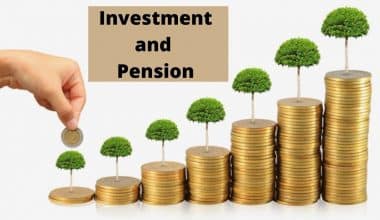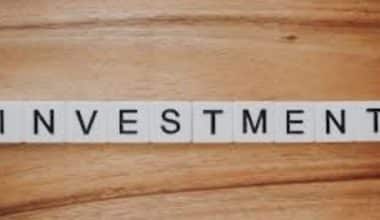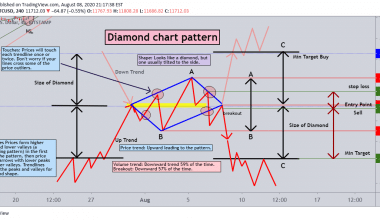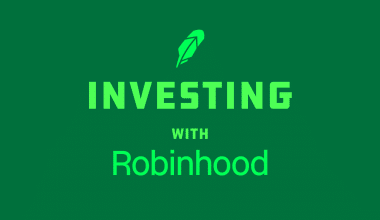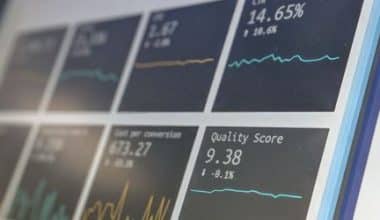The return on invested capital (ROIC) formula is one of the more advanced profitability ratios used in the financial analysis of a business. It is also one of the more overlooked but useful financial ratios for businesses and investors alike. In addition to the use of ROIC for business financial analysis, it can be used for valuation purposes by potential firm investors. The ROIC allows you to make better decisions about the business firm since it uses more specific information than the return on equity ratio.
What exactly is Invested Capital?
Invested capital refers to the capital invested in a company by both shareholders and debtholders. When a company needs capital to expand, it can do so by selling stock or issuing bonds. Shareholders are individuals who have purchased stock in a company, whereas debtholders are individuals who have purchased bonds.
Invested Capital’s Applications
Invested capital is a source of funding for a company that allows it to pursue new opportunities such as expansion. Within a company, it serves two purposes. First, it is used to purchase fixed assets such as land, a building, or machinery. Second, it is used to cover day-to-day operating expenses such as inventory purchases and employee salaries. For a variety of reasons, a company may prefer to obtain invested capital funding over a bank loan.
How Will Investors Evaluate Capital?
When a company issues stock, for example, it is under no obligation to pay dividends. When compared to paying interest on a bank loan, this makes it a low-cost source of capital. If a company does not qualify for a large bank loan with a low-interest rate, it may prefer to obtain funding through shares and bonds.
An investor evaluates invested capital using metrics such as the return on invested capital (ROIC) ratio. An investor will use this ratio to determine the value of a company. A higher ratio means that a corporation is a wealth generator and can use invested funds to produce higher profits as compared to other firms.
The ratio demonstrates a company’s ability to drive profits from its capital by dividing revenue by capital invested. A higher ratio in comparison to its rivals indicates that the business is running more effectively.
Points to Remember
Money put in a business by creditors and shareholders is referred to as invested capital.
Invested capital is used by businesses to grow operations and further develop the company. The return on invested capital (ROIC) ratio is used by investors to measure the efficiency with which a business uses capital.
This statistic can be calculated in two ways: the operating approach and the funding approach.
How is Invested Capital Determined?
The operating approach and the funding approach are the two methods for calculating invested capital.
#1. Invested Capital formula
The Invested Capital formula is as follows:
Networking capital = current operating assets – non-interest bearing current liabilities
Intangibles and goodwill include things like brand reputation, copyrights, and proprietary technologies (computer software)
#2. Funding Strategy’s Formula
The funding strategy’s formula is as follows:
Worked Example of the Operating Approach
The following is the information for Company A:
For the operating approach, the numbers needed are (1) working capital, (2) PP&E, and (3) goodwill & intangibles. Firstly, to get the net working capital figure, subtract the non-interest-bearing liabilities from current operating assets. Next, to get the PP&E, add manufacturing plant A with manufacturing machinery. Lastly, to get the goodwill & intangibles, add the goodwill amount with proprietary technology. The last step toward getting the invested capital is to add the three categories together.
Worked Example of the Financing Approach
The following is the information for Company B
For the financing approach, the main numbers needed are (1) total debt and leases, (2) total equity and equity equivalents, and (3) non-operating cash and investments. To calculate total debt and leases, add the short-term debt, long-term debt, and PV of lease obligations. Next, to get the equity and equity equivalents, add the common stock and retained earnings together. Lastly, to get the non-operating cash and investments, add the cash from financing and cash from investing. The last step to get the capital input is to add the three sums together.
What Is Return on Invested Capital (ROIC)?
Return on invested capital (ROIC) is a calculation used to assess a company’s efficiency at allocating the capital under its control to profitable investments. The return on invested capital ratio gives a sense of how well a company is using its capital to generate profits.
Comparing a company’s return on invested capital with its weighted average cost of capital (WACC) reveals whether invested capital is being used effectively. This measure is also known simply as “return on capital.”
KEY TAKEAWAYS
- Return on invested capital (ROIC) is the amount of money a company makes that is above the average cost it pays for its debt and equity capital.
- The return on invested capital can be used as a benchmark to calculate the value of other companies
- A company creating value if its ROIC exceeds 2% and destroying value if it is less than 2%.
Volume 75%
1:54
The Return On Invested Capital (ROIC)
How to Calculate Return on Invested Capital (ROIC)
The formula for ROIC is:
ROIC = (net income – dividend) / (debt + equity)
You can calculate the ROIC formula by assessing the value in the denominator, total capital, which is the sum of a company’s debt and equity. There are a number of ways to calculate this value. One is to subtract cash and non-interest-bearing current liabilities (NIBCL)—including tax liabilities and accounts payable, as long as these are not subject to interest or fees—from total assets.
Another, more precise way to write the ROIC formula is:
ROIC= NOPAT/ Invested Capital
where:
NOPAT=Net operating profit after tax
Third Method Of Calculating Invested Capital
A third method of calculating invested capital is to add the book value of a company’s equity to the book value of its debt and then subtract non-operating assets, including cash and cash equivalents, marketable securities, and assets of discontinued operations.
A final way to calculate invested capital is to obtain the working capital figure by subtracting current liabilities from current assets. Next, you obtain non-cash working capital by subtracting cash from the working capital value you just calculated. Finally, you add non-cash working capital to a company’s fixed assets. (Fixed assets are also known as long-term or non-current assets.)
An ROIC higher than the cost of capital means a company is healthy and growing, while an ROIC lower than the cost of capital suggests an unsustainable business model.
You can also calculate the value in the numerator in several ways. The most straightforward way is to subtract dividends from a company’s net income.
How To Calculate NOPAT
On the other hand, because a company may have benefited from a one-time source of income unrelated to its core business—a windfall from foreign exchange rate fluctuations, for example—it is often preferable to look at net operating profit after taxes (NOPAT). NOPAT is calculated by adjusting the operating profit for taxes:
NOPAT = (operating profit) * (1 – effective tax rate).
Operating profit is also referred to as earnings before interest and tax (EBIT). Many companies will report their effective tax rates for the quarter or fiscal year in their earnings releases, but not all companies do this.
How to Use Return on Invested Capital (ROIC)
ROIC is always calculated as a percentage and is usually expressed as an annualized or trailing 12-month value. It should be compared to a company’s cost of capital to determine whether the company is creating value.
If ROIC is greater than a firm’s weighted average cost of capital (WACC), the most common cost of capital metric, value is being created, and these firms will trade at a premium. A common benchmark for evidence of value creation is a return in excess of 2% of the firm’s cost of capital.
Understanding ROIC
If a company’s ROIC is less than 2%, it is indeed a value destroyer. Some firms run at a zero-return level, and while they may not be destroying value, these companies have no excess capital to invest in future growth.
ROIC is a critical and informative valuation metric to measure. However, it is more necessary for some industries than others, since companies that run oil rigs or produce semiconductors spend far more money than those that need less equipment.
Return on Invested Capital Limitations (ROIC)
One disadvantage of this metric is that it does not indicate which part of the company is producing value. If you base the estimate on net income (minus dividends) rather than NOPAT, the effect may be much more ambiguous, as the return could be the result of a single, non-recurring occurrence.
ROIC gives the explanation for other metrics, including the P/E ratio. When viewed in isolation, the P/E ratio may indicate that a stock is oversold; however, the decrease may be due to the fact that the company is no longer producing value for shareholders at the same pace (or at all). Companies that regularly produce high rates of return on invested capital, on the other hand, probably deserve to trade at a premium to other stocks, even though their P/E ratios seem prohibitively high.
Example of Using Return on Invested Capital Calculation
Consider Target Corporation’s (TGT) fourth-quarter 2018 earnings release as an example. The following components were used to measure the company’s trailing 12-month ROIC for that year:
| Target Corp. FY 2018 ROIC Calculation | ||
| (All values in millions of U.S. dollars) | TTM 2/3/18 | TTM 1/28/17 |
| Earnings from continuing operations before interest expense and income taxes | 4,312 | 4,969 |
| + Operating lease interest * | 80 | 71 |
| – Income taxes | 864 | 1,648 |
| Net operating profit after taxes | 3,528 | 3,392 |
| Current portion of long-term debt and other borrowings | 270 | 1,718 |
| + Noncurrent portion of long-term debt | 11,317 | 11,031 |
| + Shareholders’ equity | 11,709 | 10,953 |
| + Capitalized operating lease obligations * | 1,339 | 1,187 |
| – Cash and cash equivalents | 2,643 | 2,512 |
| – Net assets of discontinued operations | 2 | 62 |
| Invested capital | 21,990 | 22,315 |
| Average invested capital | 22,152 | 22,608 |
| After-tax return on invested capital | 15.9% | 15.0% |
Target Corp. FY 2018 ROIC Calculation
ROIC Calculation Breakdown
The ROIC measure starts with profits from ongoing operations before interest payments and income taxes (EBIT), then adds operating lease interest and subtracts income taxes, yielding a net profit after taxes of $3.5 billion (the numerator). 1 Add the present portion of long-term debt and other borrowings, followed by the non-current portion of long-term debt, shareholder equity, and capitalized operating lease obligations.
Subtract cash and cash equivalents from the net assets of discontinued activities to arrive at $22.2 billion in gross investment capital. When you multiply this number by the accumulated capital at the end of the previous year ($22.3 billion), you get a denominator of $22.2 billion.
The after-tax return on invested capital is 15.9 percent as a result. The corporation attributed the rise over the previous year primarily to the impact of the late 2017 tax bill.
Moreover, since you hide asterisked values in an addendum, this estimate would have been difficult to derive from the income statement and balance sheet alone. As a result, estimating ROIC can be difficult, but it is worthwhile to arrive at a ballpark figure in order to evaluate a company’s productivity in putting resources to work.
Return On Invested Capital Limitations
Generally, ROIC will never tell you which aspect of the business is generating revenue.
Can ROIC be improved?
Yes, ROIC can be improved by increasing the company’s net income or by decreasing the amount of invested capital. Strategies for improving ROIC may include increasing operational efficiency, reducing debt, or optimizing the company’s capital structure.
How does ROIC compare to other financial metrics?
ROIC is a comprehensive metric that takes into account a company’s profitability and its use of capital. It can be compared to other financial metrics such as return on equity (ROE) or earnings before interest and taxes (EBIT) to better understand a company’s financial performance.
How does ROIC impact a company’s valuation?
ROIC can impact a company’s valuation because it is a measure of the efficiency with which the company uses its invested capital to generate profits. A high ROIC indicates that a company is effectively using its capital to generate returns, which can increase the company’s overall value.
What is the relationship between ROIC and profitability?
ROIC and profitability are closely related, as ROIC measures the return on invested capital, which is a component of a company’s overall profitability. A high ROIC indicates that a company is generating a high return on its invested capital, which can positively impact its overall profitability.
How does ROIC impact a company’s credit rating?
ROIC can impact a company’s credit rating because it is a measure of the efficiency with which a company uses its capital to generate profits. A high ROIC indicates that a company is effectively using its capital, which can improve its creditworthiness and increase its credit rating.
How does ROIC impact a company’s stock price?
ROIC can impact a company’s stock price because it is a measure of the efficiency with which the company uses its capital to generate profits. A high ROIC indicates that a company is effectively using its capital to generate returns, which can increase investor confidence and result in a higher stock price.
What role does management play in improving ROIC?
Management plays a crucial role in improving ROIC, as they are responsible for making decisions that impact the company’s profitability and use of capital. Effective management can improve ROIC by implementing strategies such as increasing operational efficiency, reducing debt, or optimizing the company’s capital structure.
How can ROIC be used in valuation models?
ROIC can be used in valuation models because it is a measure of the efficiency with which a company uses its capital to generate profits. By incorporating ROIC into a valuation model, investors can better understand a company’s financial performance and make more informed investment decisions.
Return On Invested Capital FAQs
How do you calculate return on invested capital?
Formula and Calculation of Return on Invested Capital (ROIC)
Written another way, ROIC = (net income – dividends) / (debt + equity). The ROIC formula is calculated by assessing the value in the denominator, total capital, which is the sum of a company’s debt and equity.
What’s a good return on invested capital?
As of January 2021, the total market average ROIC is 6,05%, without the financial companies, it is 10,58%. It’s also interesting to see how much ROIC numbers can vary from industry to industry. Many sectors have an average ROIC in the low to mid-teens, while some either offer much lower, or exceptionally higher ROICs.
Is 5 percent a good return on investment?
Safe Investments
Historical returns on safe investments tend to fall in the 3% to 5% range but are currently much lower (0.0% to 1.0%) as they primarily depend on interest rates. When interest rates are low, safe investments deliver lower returns.
What is a good ROIC percentage?
A company is thought to be creating value if its ROIC exceeds 2% and destroying value if it is less than 2%.
